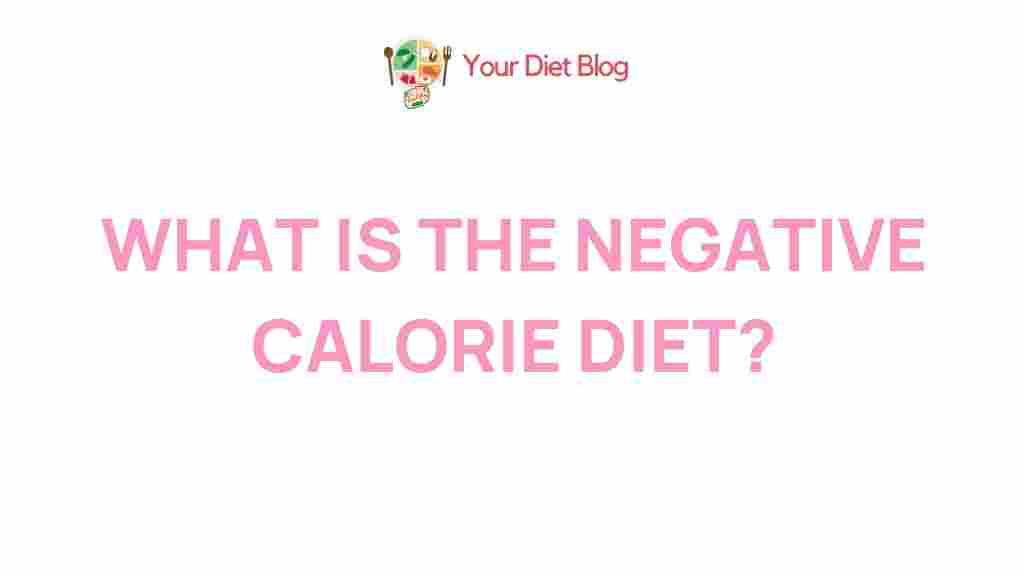Your ultimate guide to understanding negative calorie diets.
What is a Negative Calorie Diet?
The concept of a negative calorie diet is rooted in the idea that certain foods require more energy to digest than the calories they provide. This means your body burns more calories processing these foods than the energy you consume from them, theoretically creating a calorie deficit.
While the theory sounds promising, especially for those seeking weight loss, the scientific evidence behind it remains a subject of debate. Popular foods associated with the negative calorie diet include celery, lettuce, cucumbers, and other low-calorie, high-water-content vegetables.
How Does a Negative Calorie Diet Work?
The premise is simple: by eating these “negative calorie” foods, your body supposedly burns extra calories to digest, absorb, and metabolize the nutrients they contain. The process of digestion—known as the thermic effect of food (TEF)—is said to exceed the caloric content of these foods.
- Low calorie content: Foods like celery contain very few calories, sometimes as little as 10-15 calories per serving.
- High water and fiber content: These components make the foods filling while contributing minimal calories.
- Increased metabolism: Digesting raw and fibrous foods may slightly elevate the thermic effect, resulting in calorie burn.
Popular Foods in the Negative Calorie Diet
Here are some foods often included in a negative calorie diet:
- Celery
- Cucumbers
- Lettuce
- Broccoli
- Apples
- Grapefruit
- Carrots
These foods are celebrated for their low calorie density and high nutrient content, making them excellent choices for overall health, even if the “negative calorie” claim may not hold.
Is the Negative Calorie Diet Scientifically Proven?
While the negative calorie diet theory is compelling, scientific studies suggest it may be oversimplified. The thermic effect of food (TEF) usually accounts for about 5-10% of your daily energy expenditure. This means that while eating celery might slightly boost calorie burn, it’s unlikely to have a significant impact on overall weight loss.
Experts caution against relying solely on this diet for long-term weight management. Instead, it’s essential to adopt a balanced approach that includes whole foods, sufficient protein, and an overall calorie deficit. For a deeper understanding of effective weight loss strategies, visit our comprehensive guide to healthy eating.
Common Myths About Negative Calorie Diets
- Myth: Negative calorie foods can lead to effortless weight loss.
- Fact: Weight loss requires a sustainable calorie deficit achieved through diet and exercise.
- Myth: Eating only negative calorie foods is enough for nutrition.
- Fact: A diet focused solely on low-calorie foods lacks essential nutrients like protein and healthy fats.
Benefits of Including Negative Calorie Foods
Even if the concept of a negative calorie diet is overstated, incorporating these foods into your meals has several health benefits:
- Low in calories: These foods can help with portion control and calorie management.
- Rich in nutrients: Many are loaded with vitamins, minerals, and antioxidants.
- High in fiber: Fiber promotes digestion, satiety, and gut health.
- Hydration: High-water-content foods support overall hydration levels.
Steps to Incorporate Negative Calorie Foods into Your Diet
Here’s how you can add negative calorie foods to your meals for better health and weight management:
1. Add as Snacks
Replace processed snacks with options like carrot sticks, celery with hummus, or cucumber slices sprinkled with lemon juice and salt.
2. Use in Salads
Create vibrant salads using leafy greens, cucumbers, and a squeeze of citrus for flavor. Avoid calorie-dense dressings to keep your salad light and nutritious.
3. Blend into Smoothies
Blend apples, grapefruit, and other fruits into a refreshing smoothie. These can be a great way to start your day or refuel post-workout.
4. Pair with Protein
Balance these low-calorie foods with lean proteins like chicken, fish, or legumes to ensure you’re meeting your nutrient needs.
Potential Drawbacks and Risks
While the negative calorie diet can complement a healthy lifestyle, it is not without its challenges:
- Restricting your diet to only low-calorie foods can lead to nutritional deficiencies.
- Focusing on calorie burning rather than nutrient balance may hinder long-term health goals.
- Overeating “negative calorie” foods might still lead to weight gain if not monitored properly.
It’s essential to strike a balance and consult with a registered dietitian or nutritionist for personalized guidance.
Conclusion
The idea of a negative calorie diet is intriguing, but it’s not a magic solution for weight loss. While foods like celery and lettuce can be part of a healthy diet, relying solely on them won’t provide the balanced nutrition your body needs. Instead, focus on creating a sustainable calorie deficit through a combination of nutrient-rich foods and regular physical activity.
To learn more about evidence-based weight loss strategies, check out this external resource for expert advice.
Remember, achieving your health goals is a journey that requires consistency, patience, and a comprehensive approach to nutrition and exercise.
This article is in the category Myths & Facts and created by YourDiet Team
